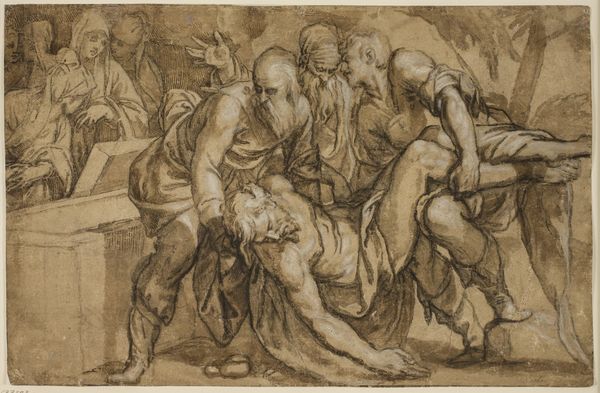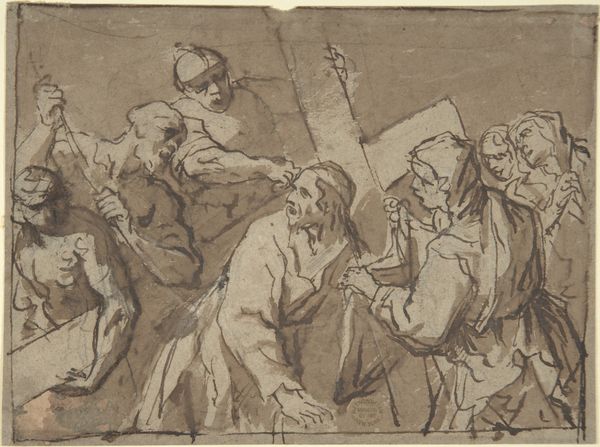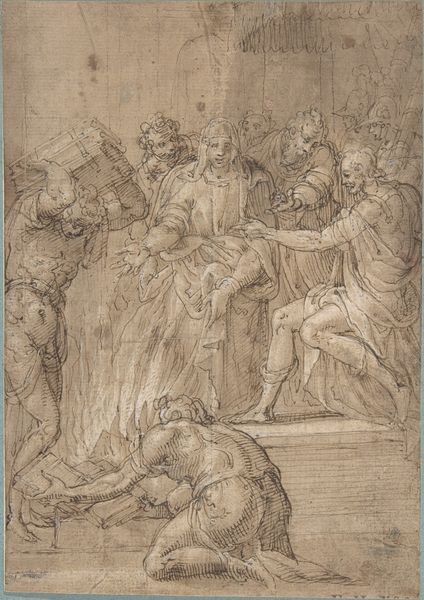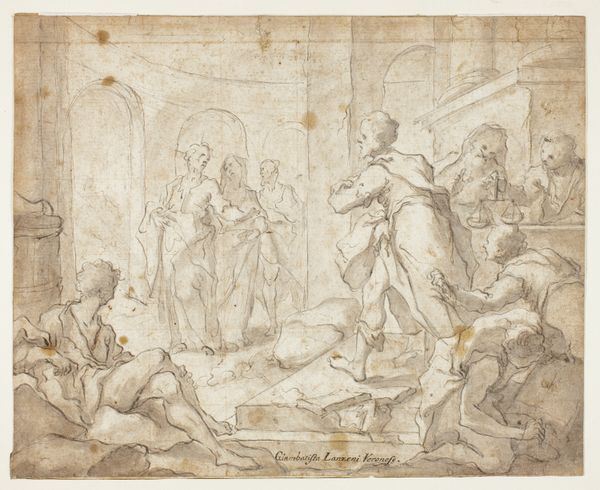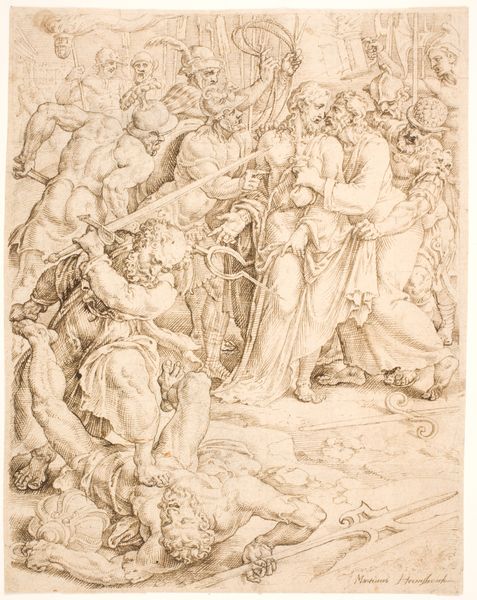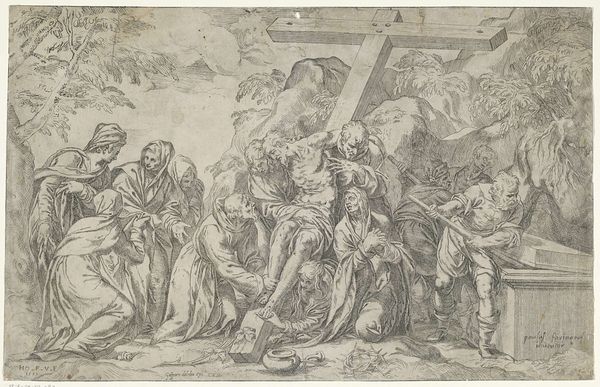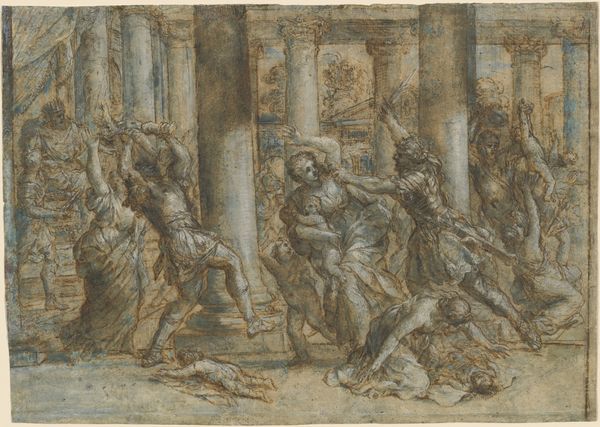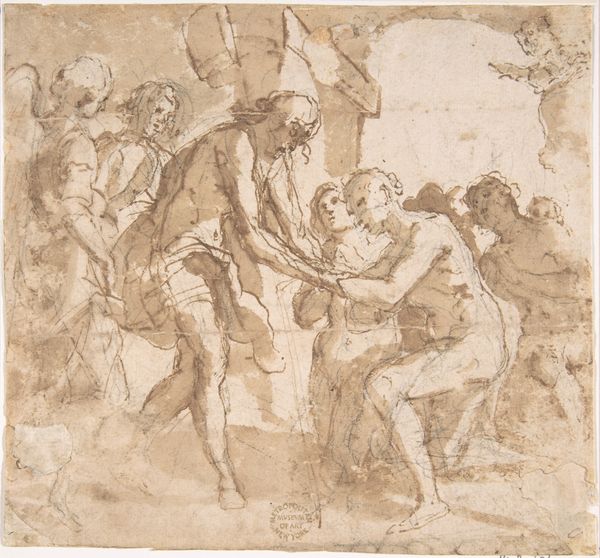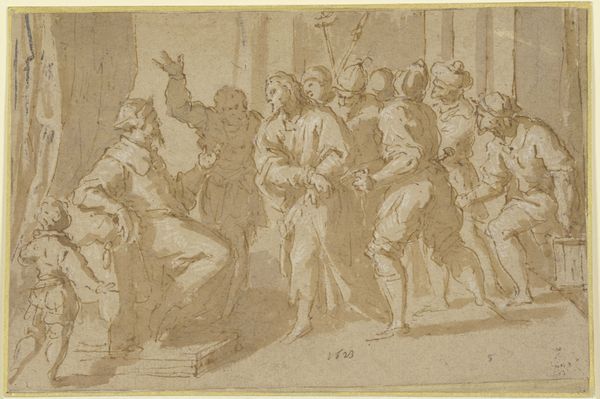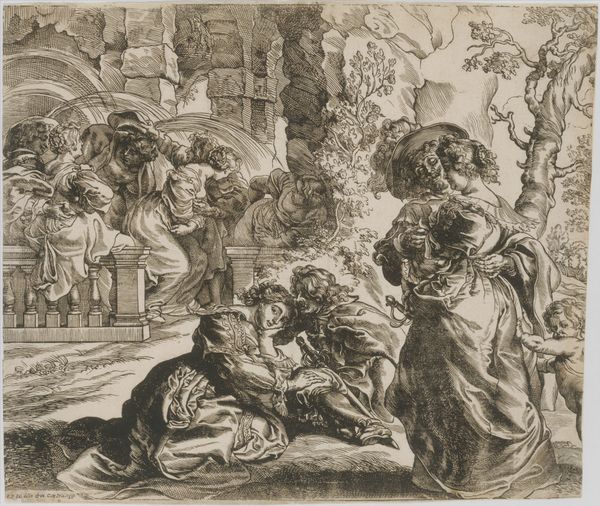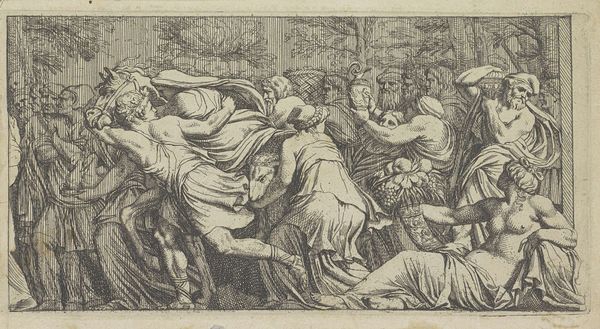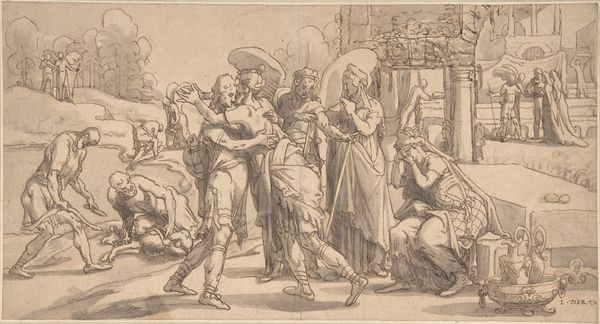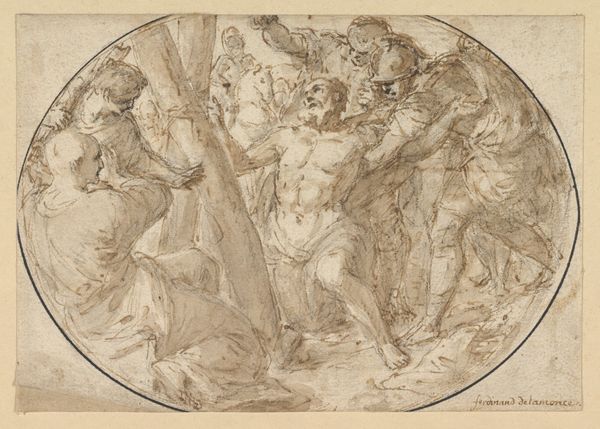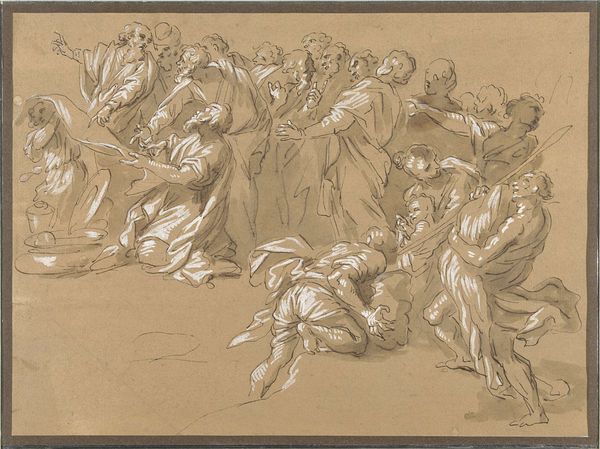
drawing, ink, pen
#
drawing
#
ink drawing
#
pen sketch
#
pencil sketch
#
mannerism
#
figuration
#
ink
#
pen
#
history-painting
Dimensions: 166 mm (height) x 421 mm (width) (bladmaal)
Curator: Welcome. We're looking at "Lazarus' opv\u00e6kkelse," a drawing rendered in ink and pen. It dates back to 1593 and is attributed to Giovanni Battista della Rovere. Editor: Immediately, I'm struck by the dramatic dynamism of the scene. It feels so raw, immediate; the pen lines seem to vibrate with the energy of the resurrection itself. Curator: Absolutely. The Mannerist style is quite evident here. Della Rovere employs exaggerated poses and crowded figures to heighten the emotional intensity, really placing this miraculous biblical narrative within a tangible history. How does the socio-political context of that period amplify the drawing’s inherent tension for you? Editor: It is an image of power, right? And faith is a tool. Think of how this narrative was leveraged – this promise of rebirth – and think about the distribution and politics around death during this period; how those anxieties of powerlessness would have been activated through witnessing the miracle that the work depicts. Also notice, for example, how central this act of, let's say, "white" resurrection is situated historically, systematically within art. Curator: A crucial point. The theatrical staging lends itself to an interpretation about public spectacle and the politics of religious imagery in 16th century Europe. One sees the history painting traditions very clearly, here, within religious confines, and how the performative, public display served larger political purposes. Editor: Looking closely at Lazarus, emerging from what looks like a rough, earthly enclosure, you can’t ignore the performativity of this emergence, which you named. Is he a willing participant or merely a figure in this larger symbolic drama? Considering issues of agency becomes quite significant in these religiously framed pieces of art. It forces one to interrogate who gets a voice, who's centered, and at whose expense? Curator: It certainly challenges us to think critically about these depictions of power, both spiritual and temporal, and to be aware of the multiple layers of meaning embedded within religious art from that period. Della Rovere's Lazarus presents, after all, an incredible historical moment to study. Editor: And in seeing these moments critically we understand the contemporary echoes too. It prompts so much further thinking about agency, display, and narrative.
Comments
No comments
Be the first to comment and join the conversation on the ultimate creative platform.
